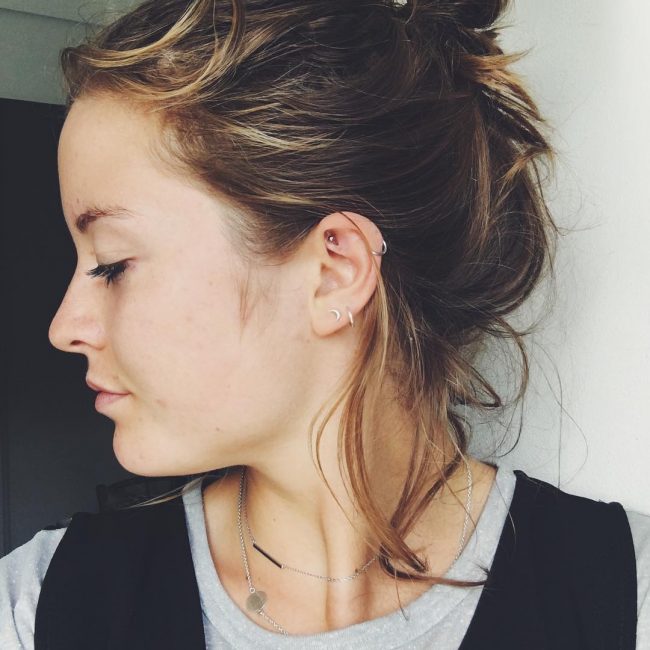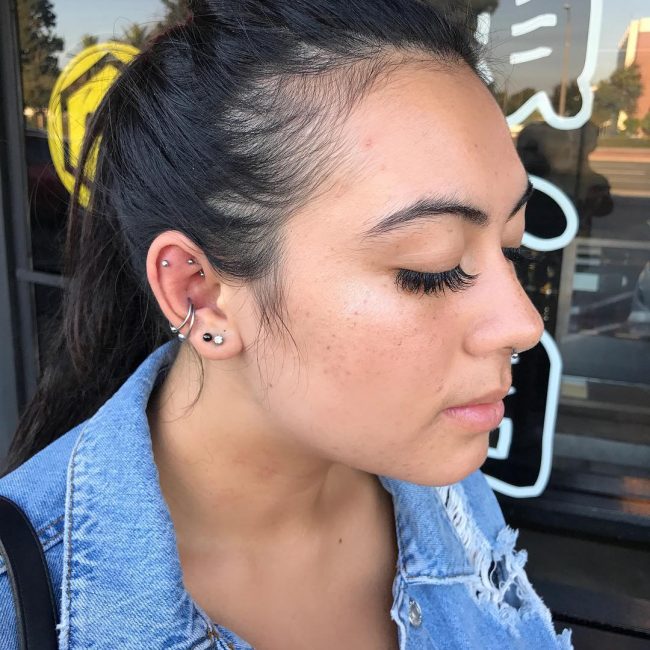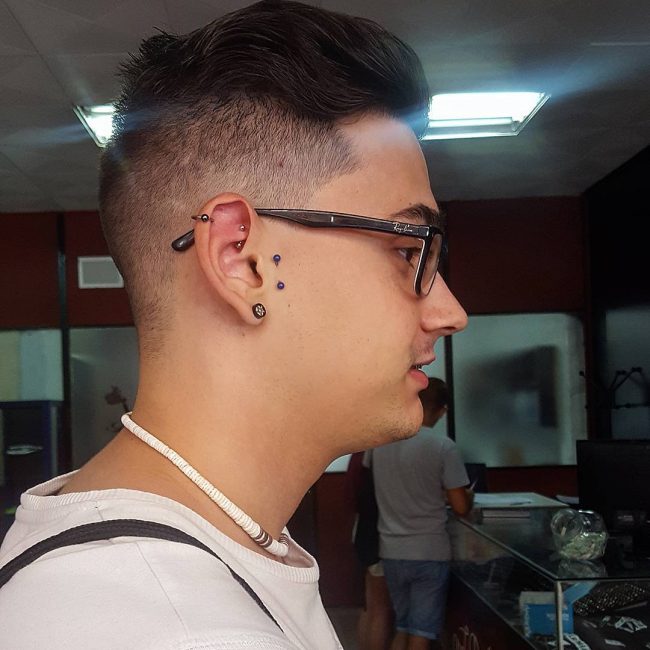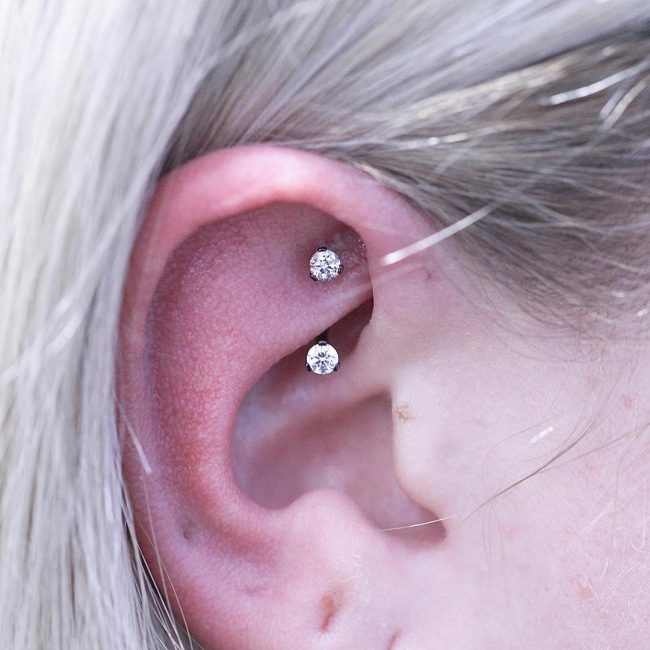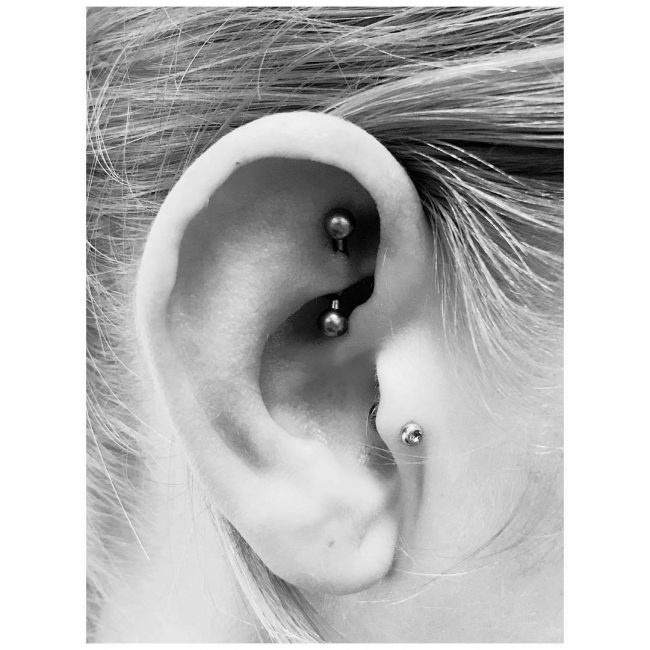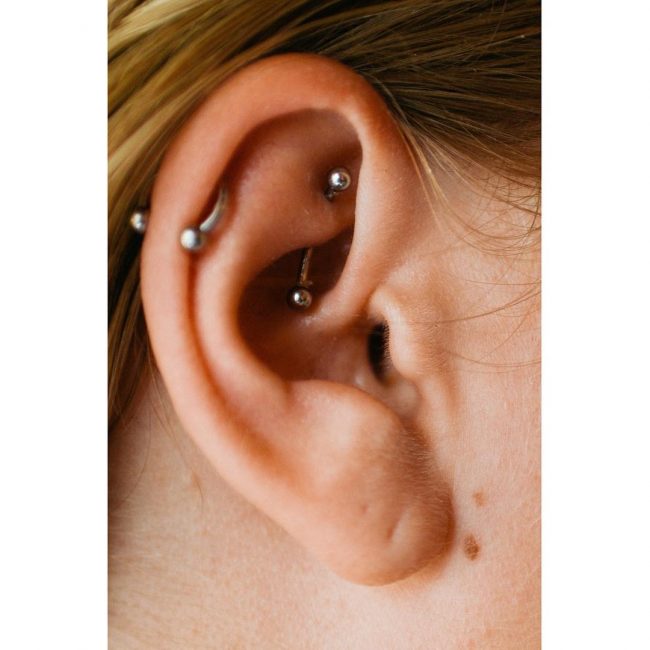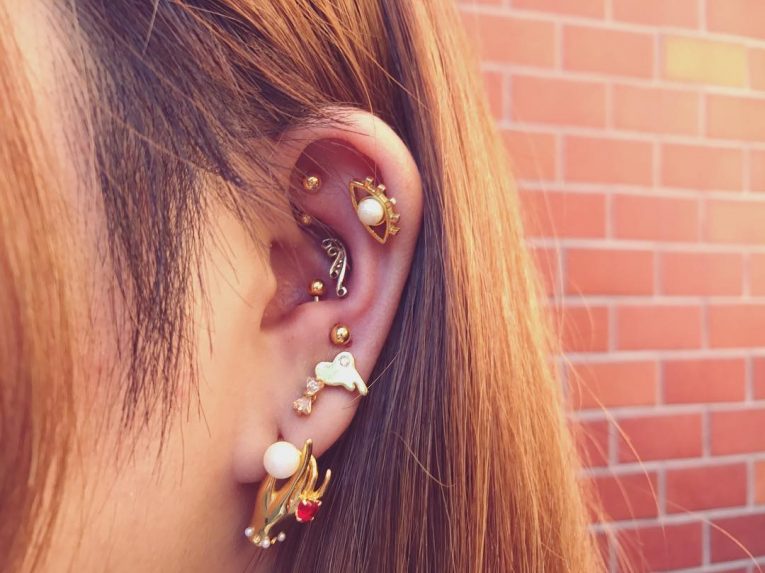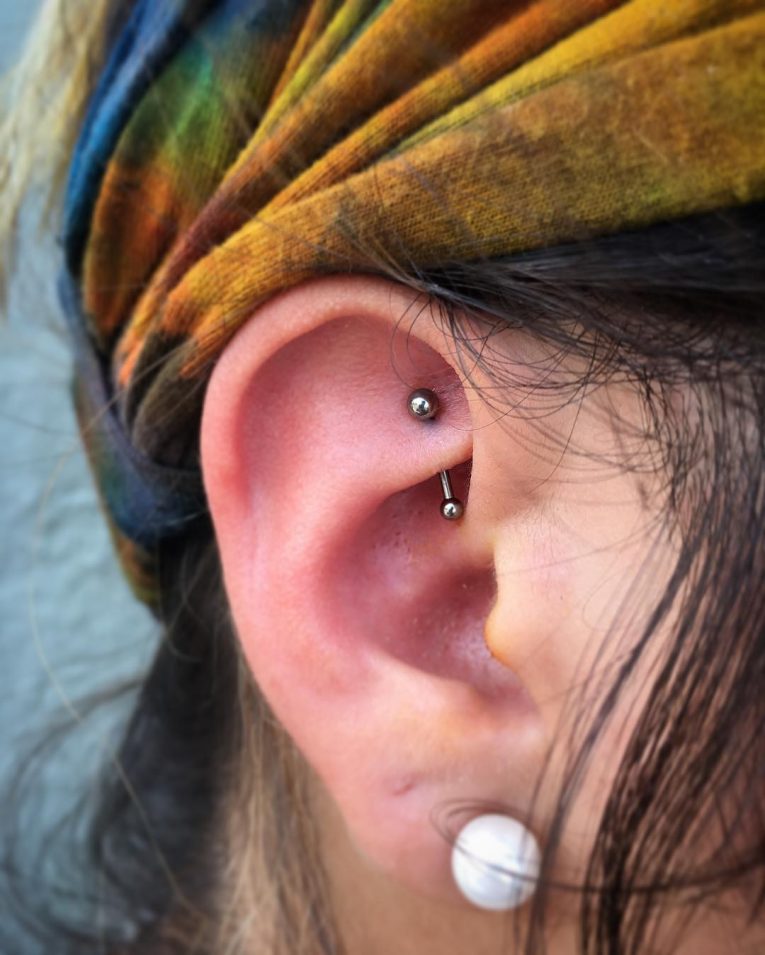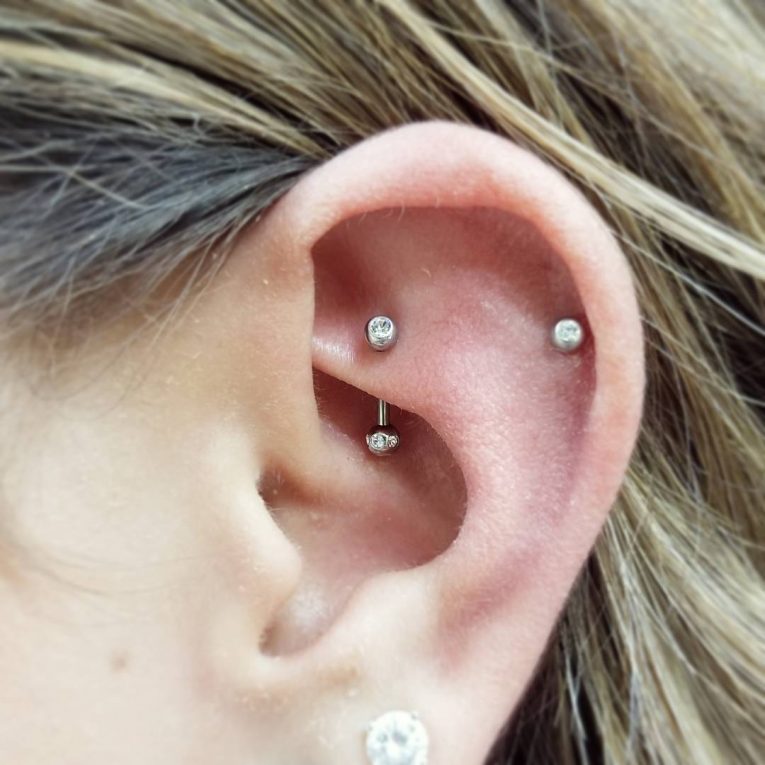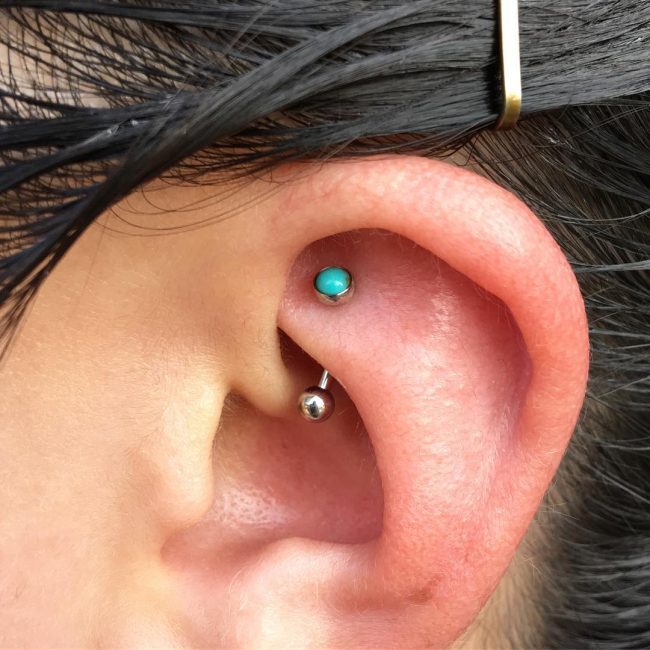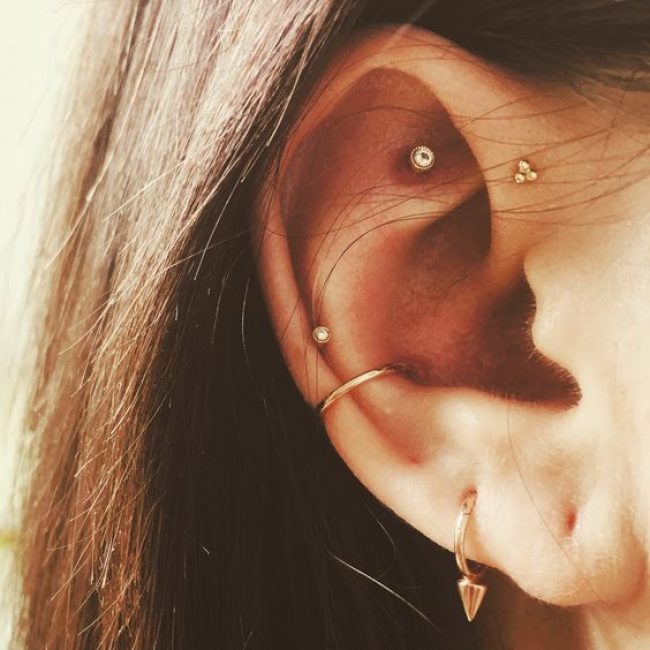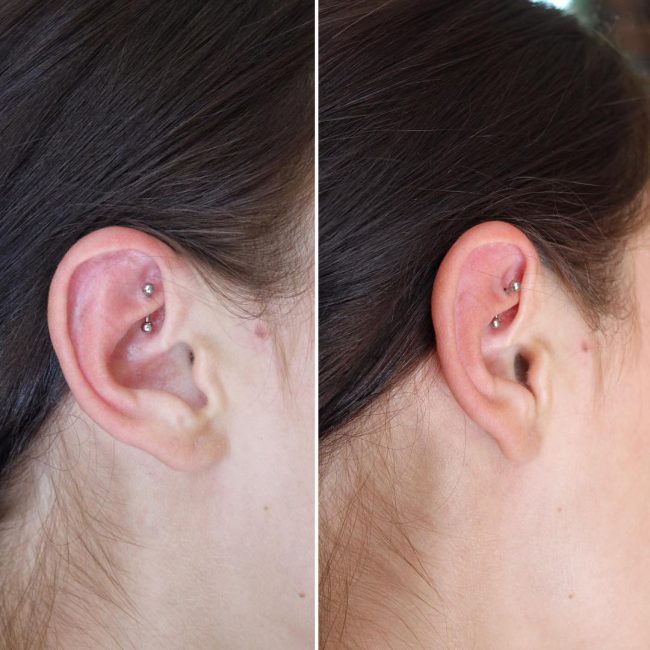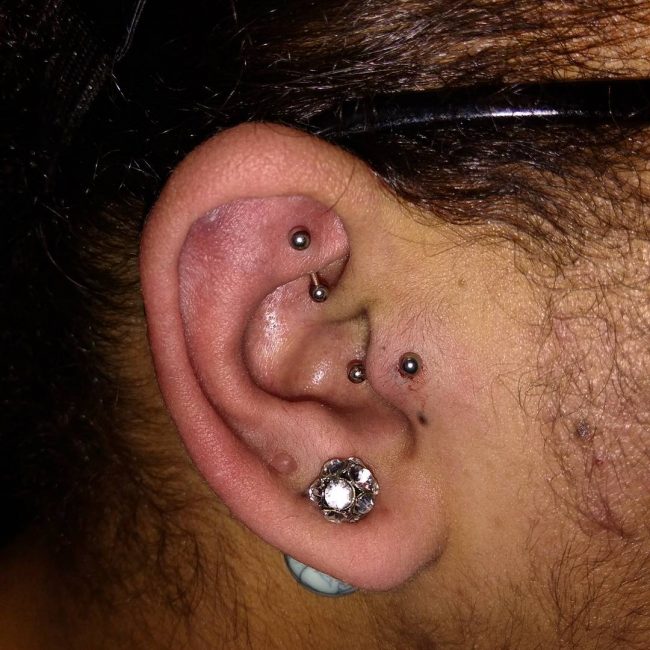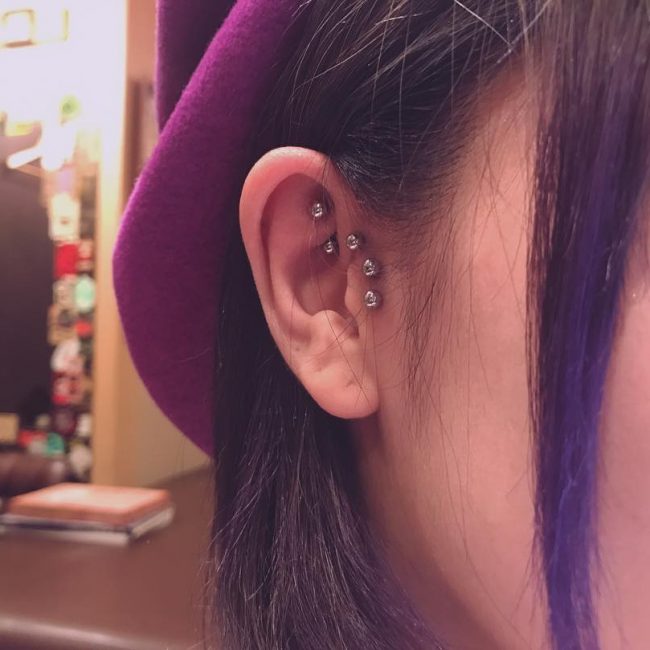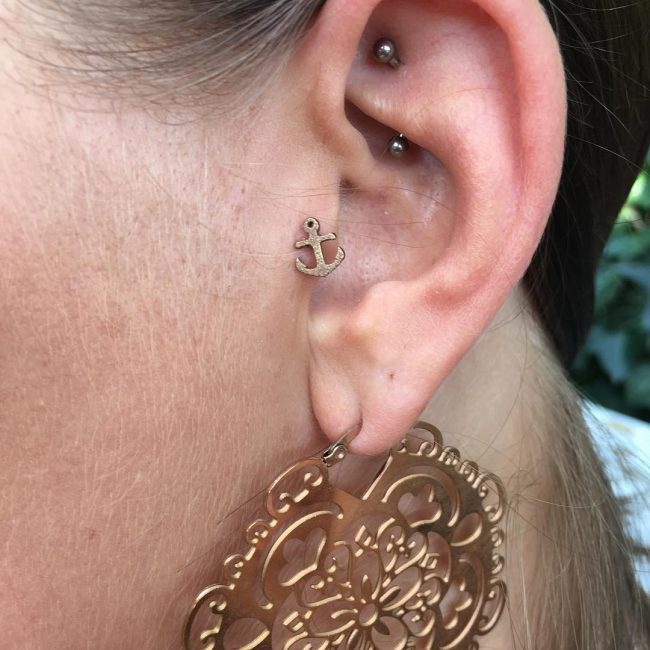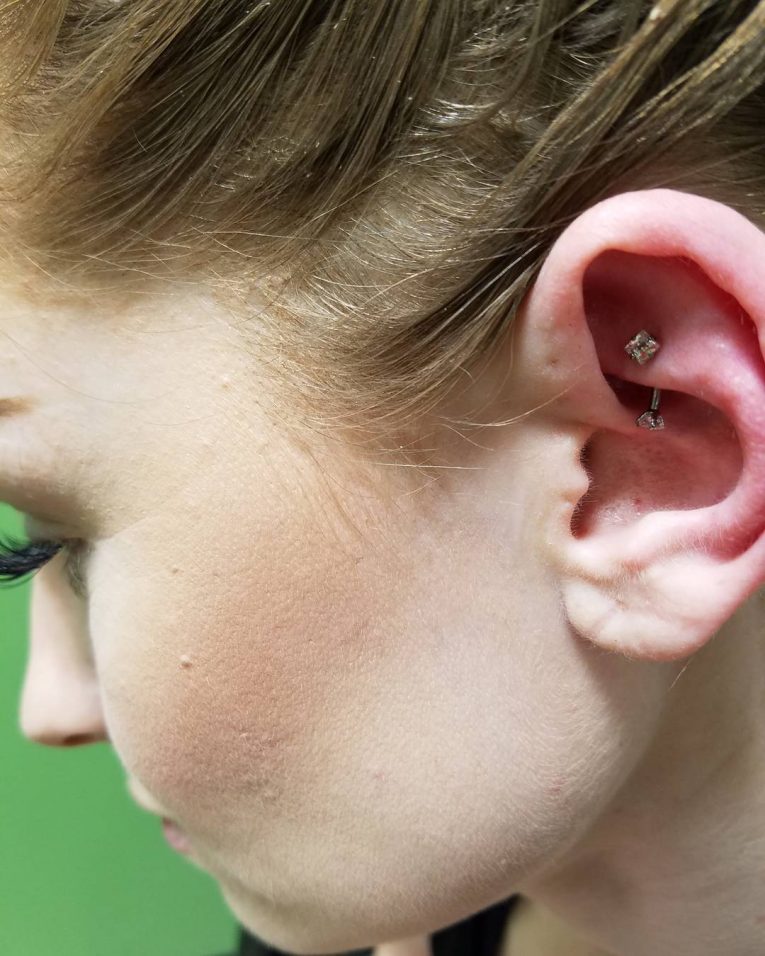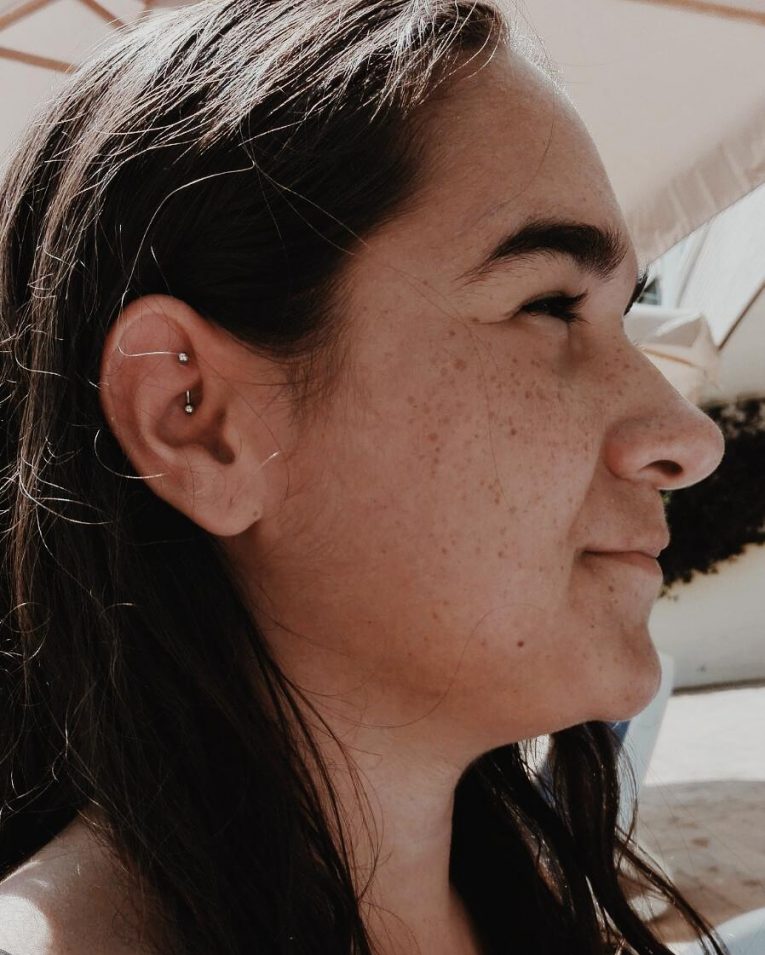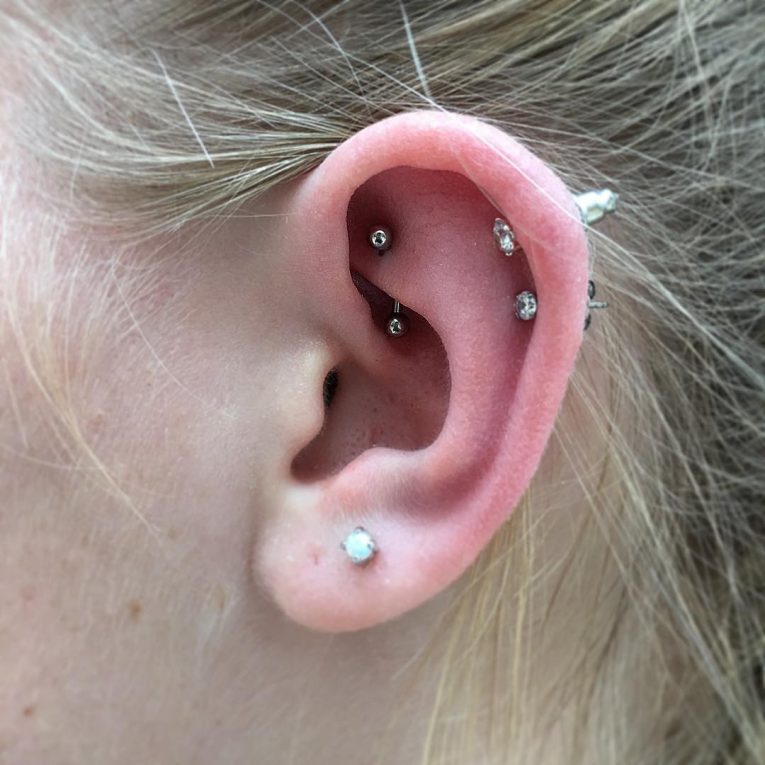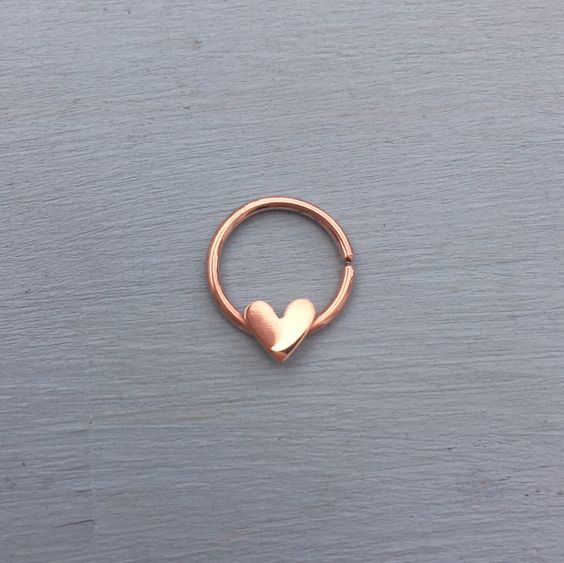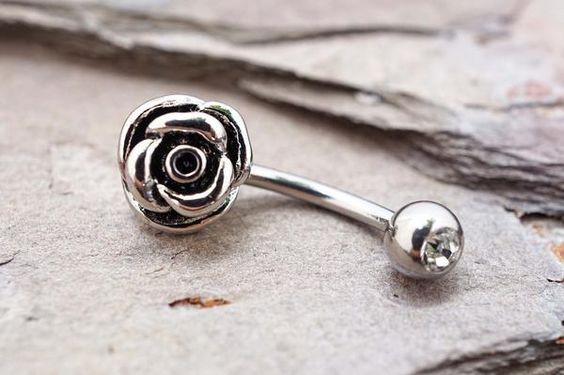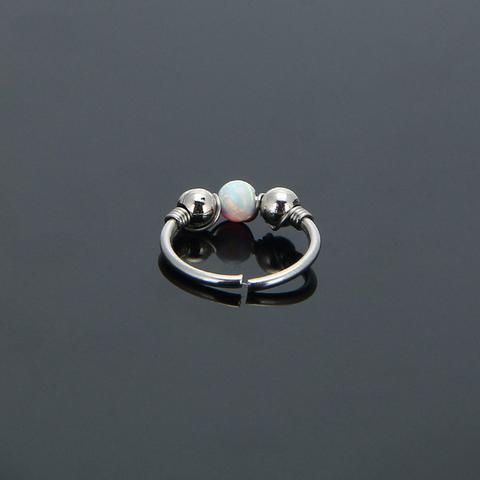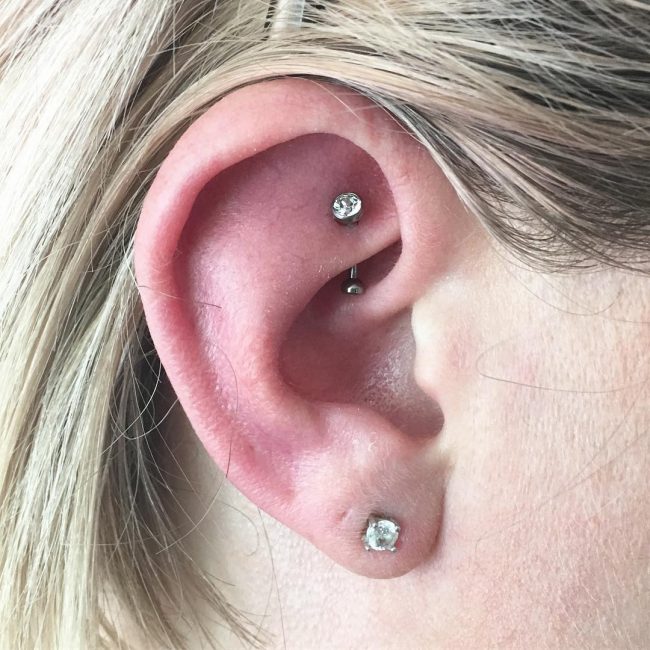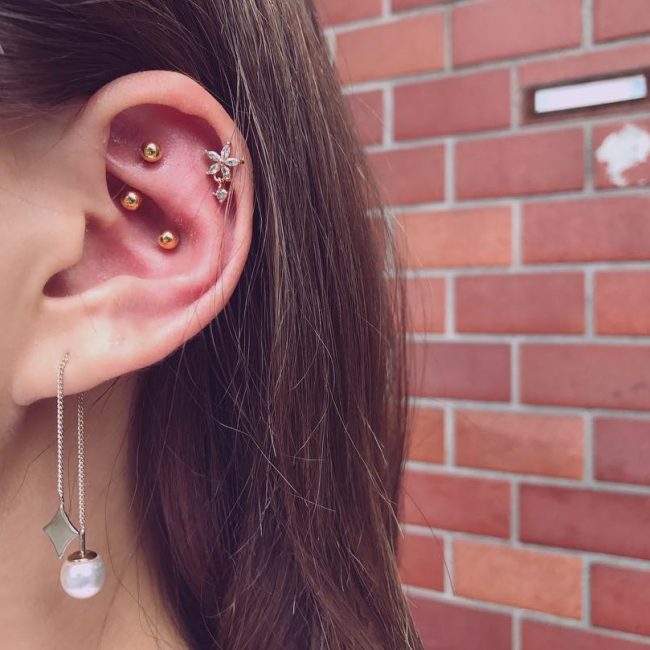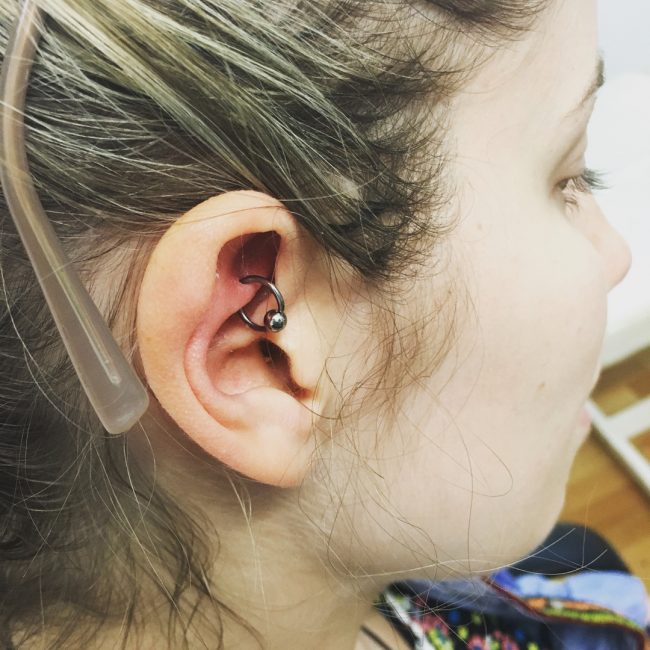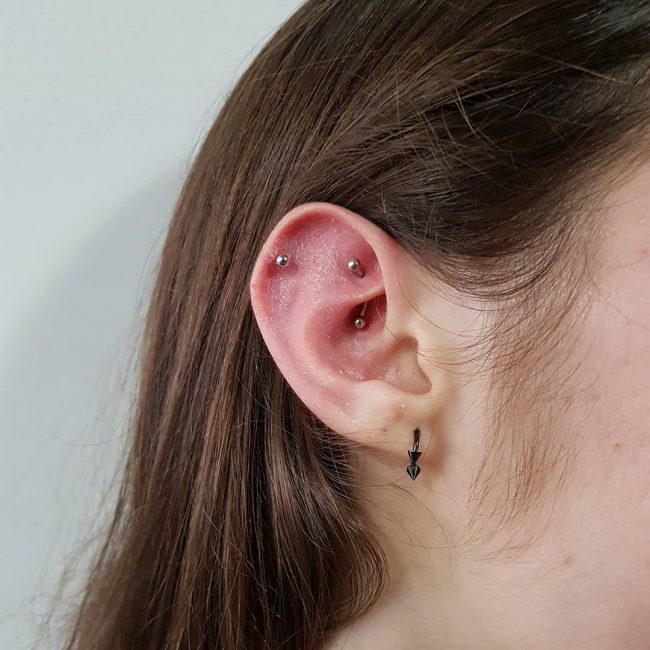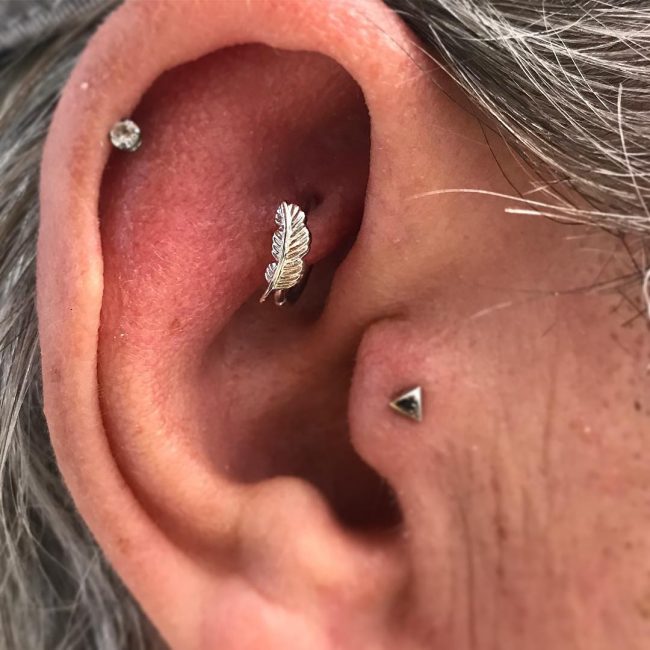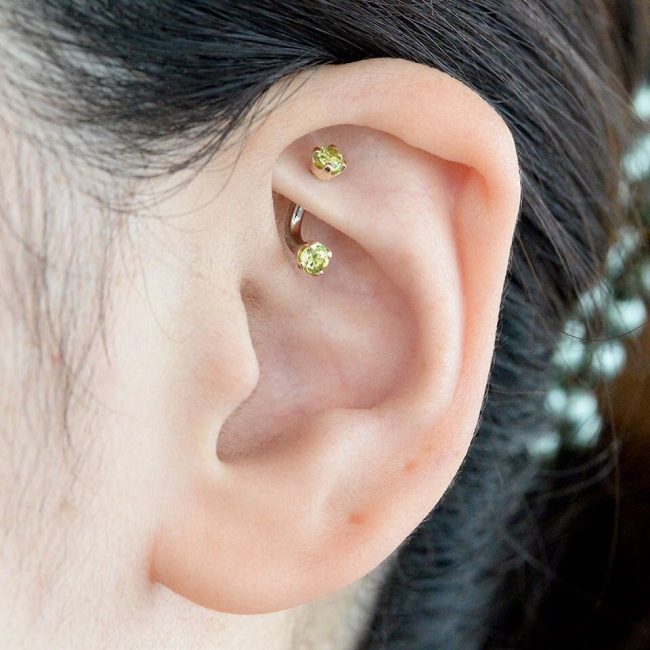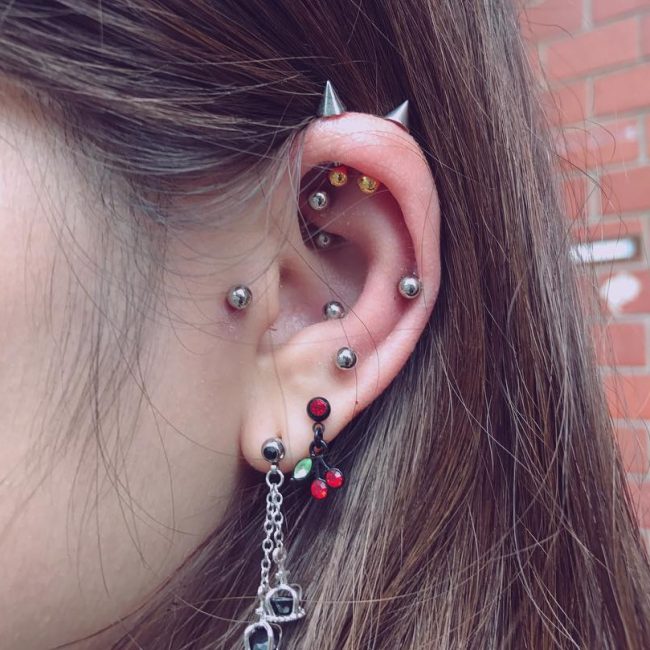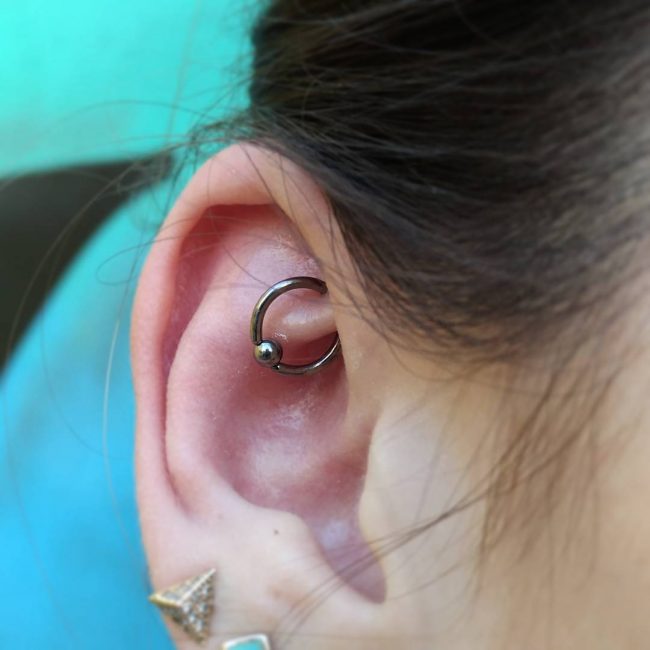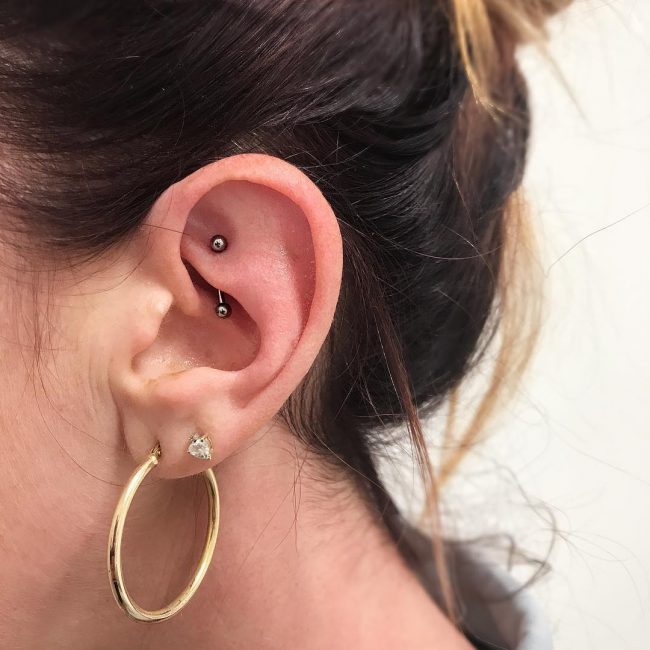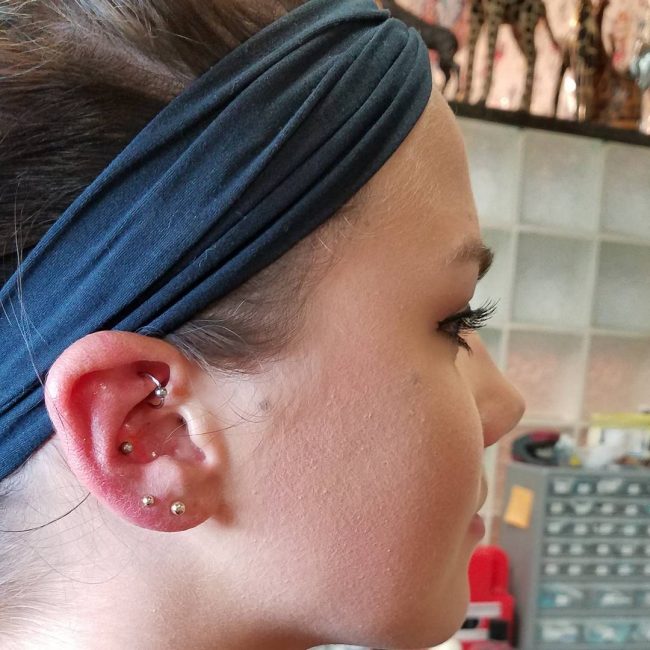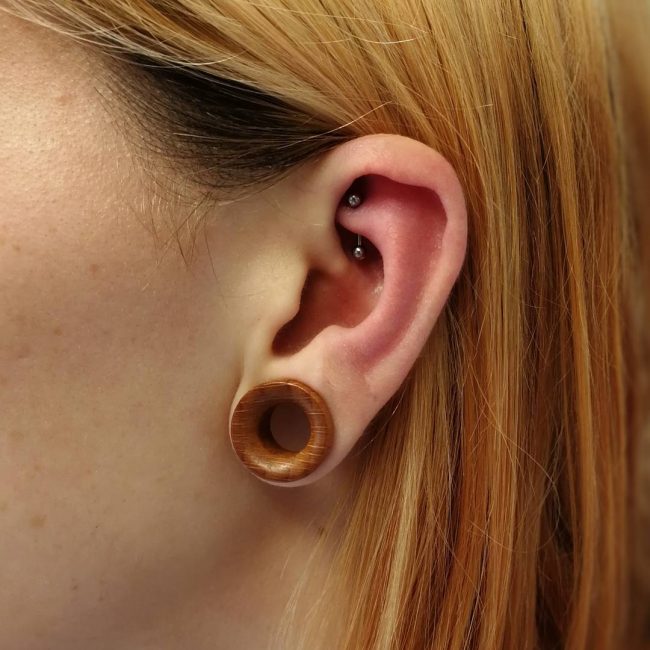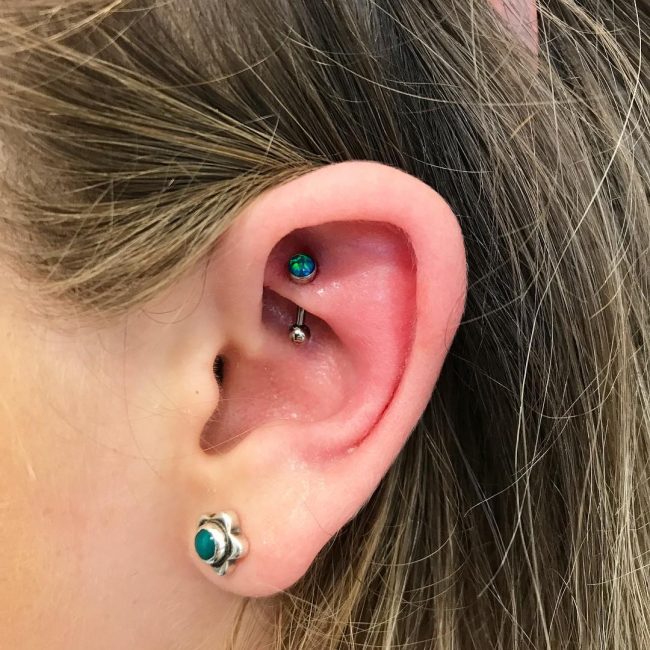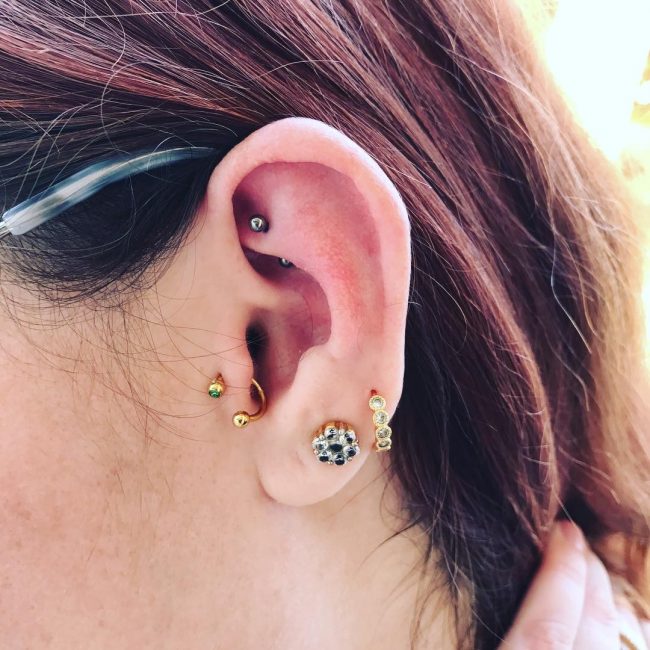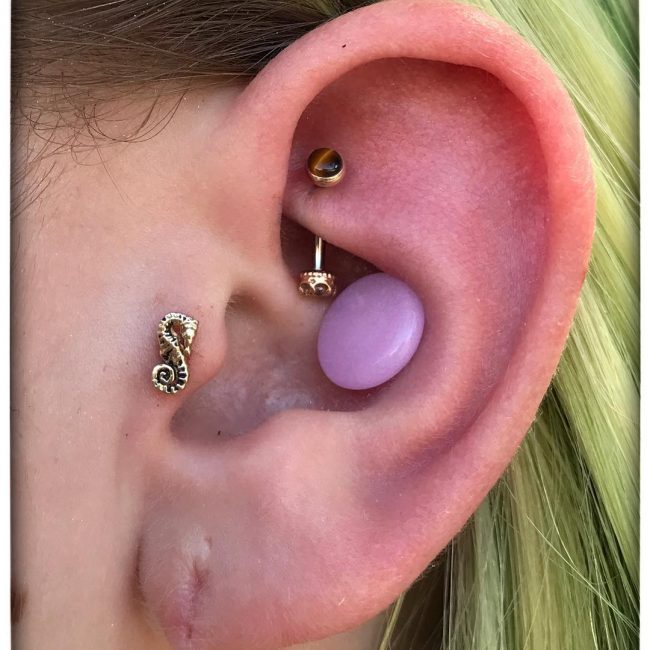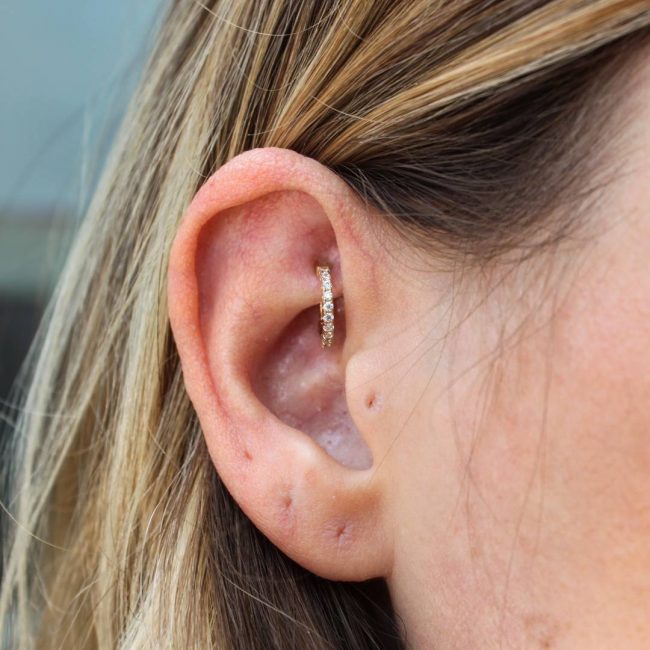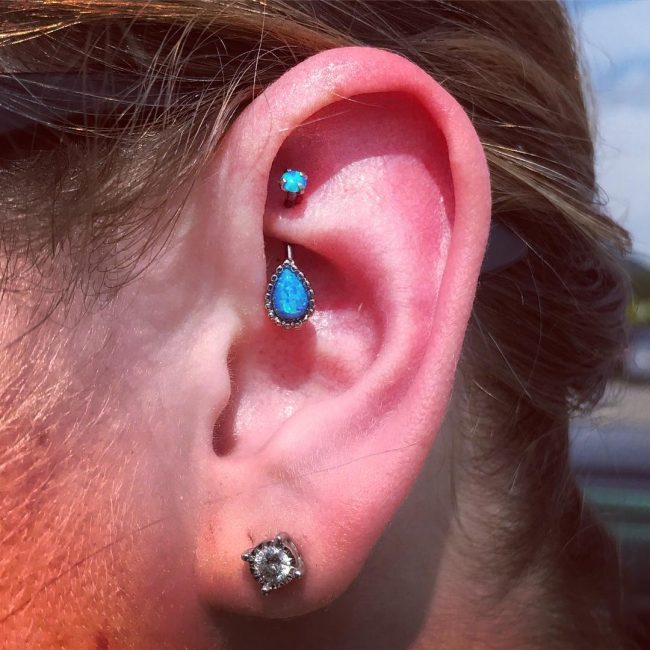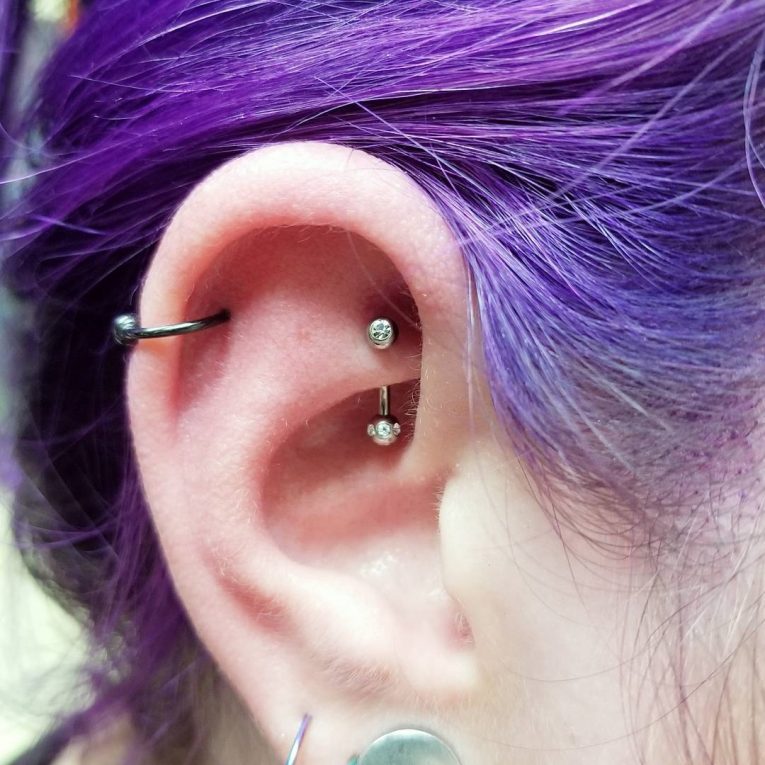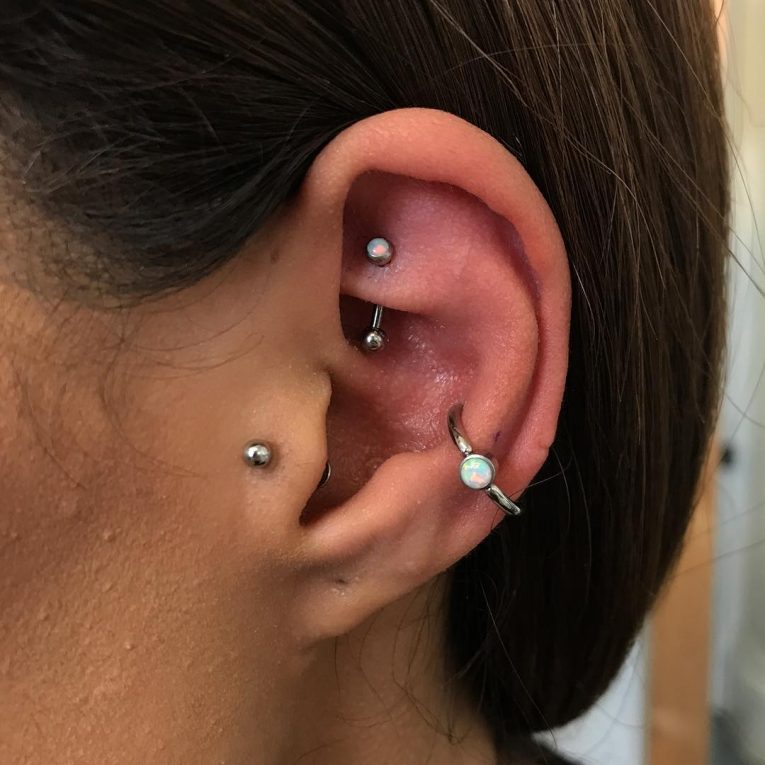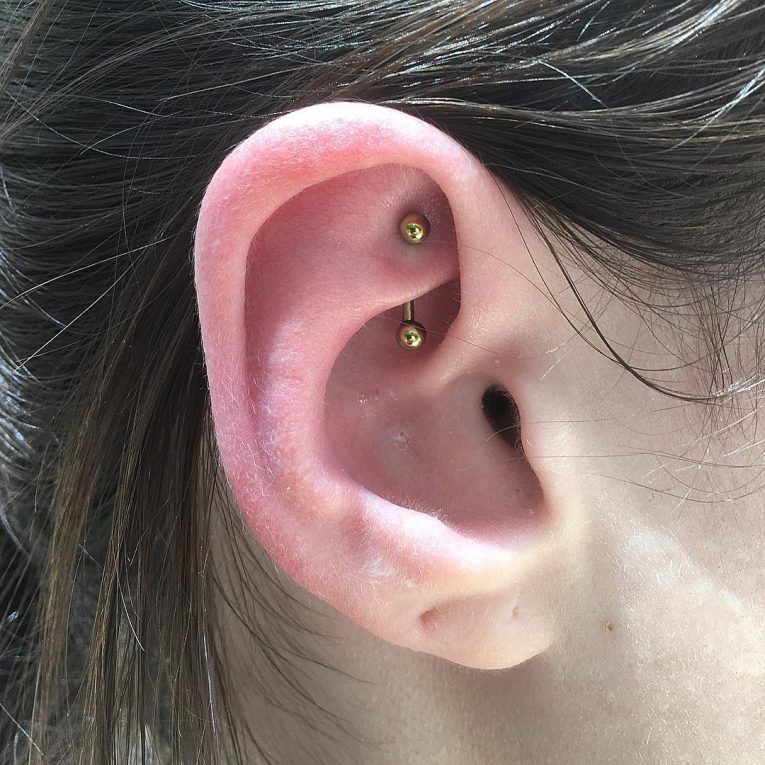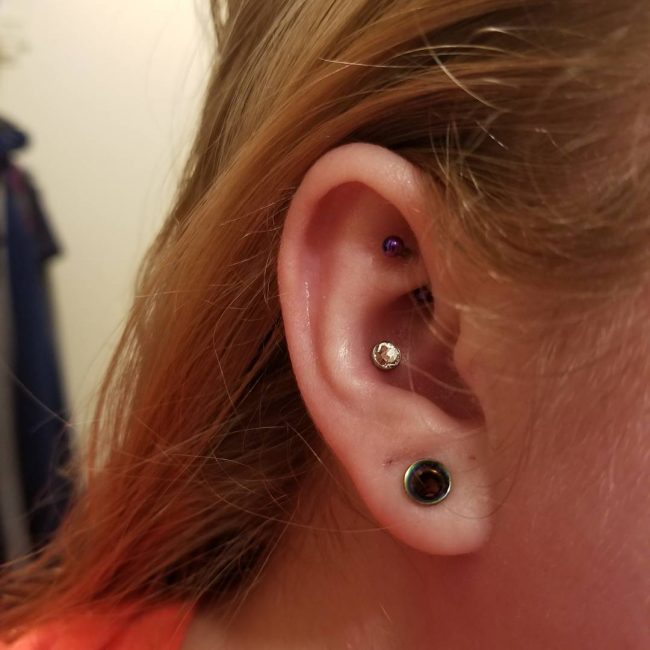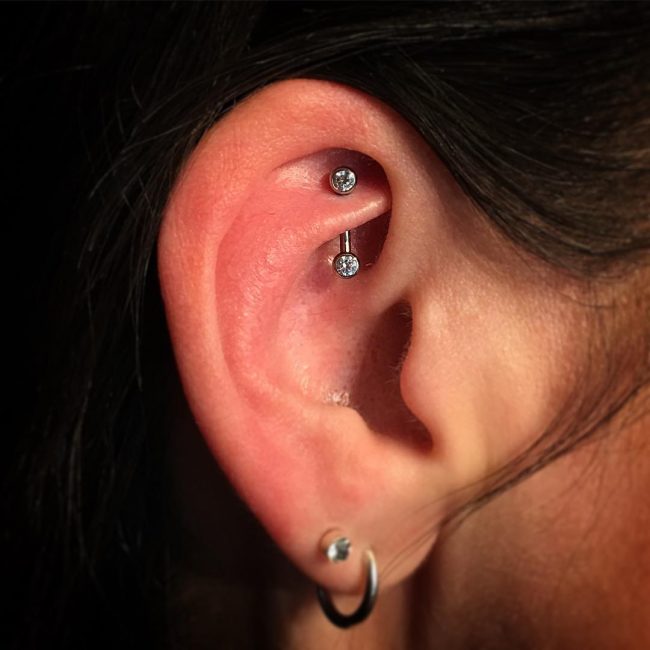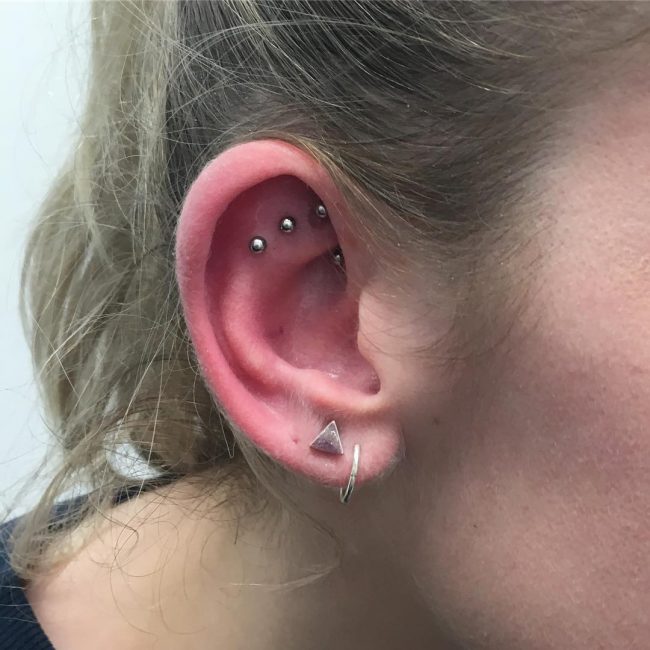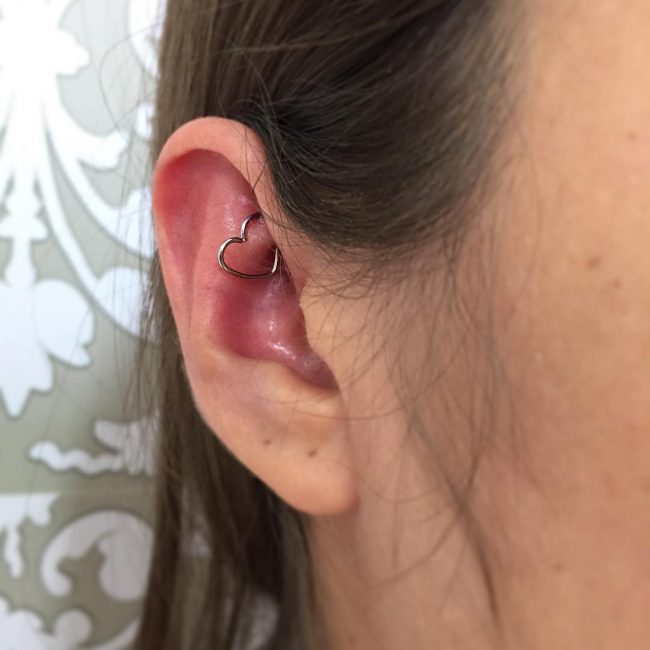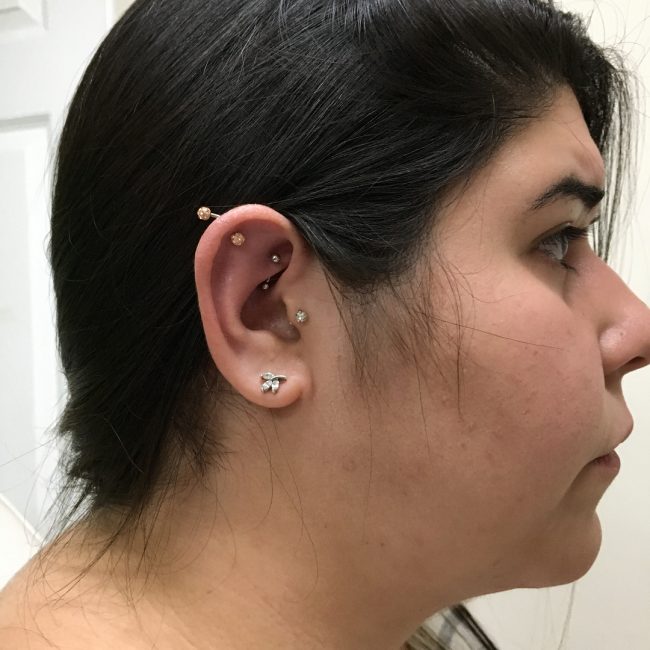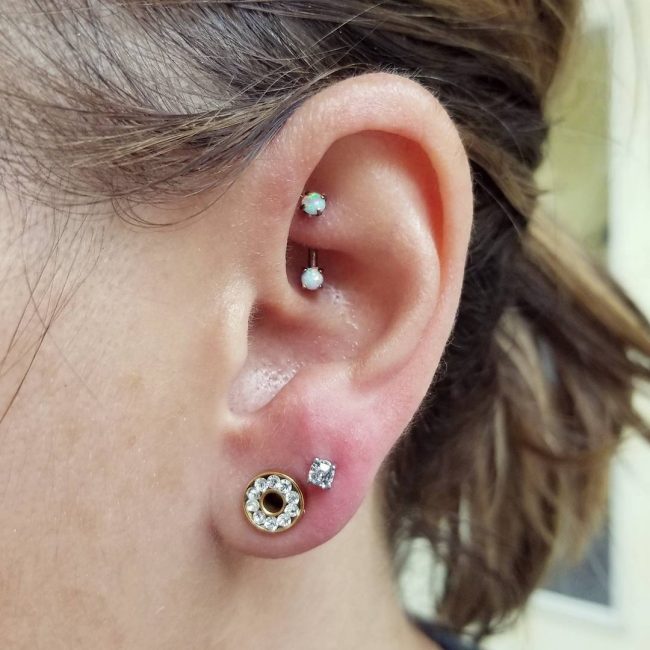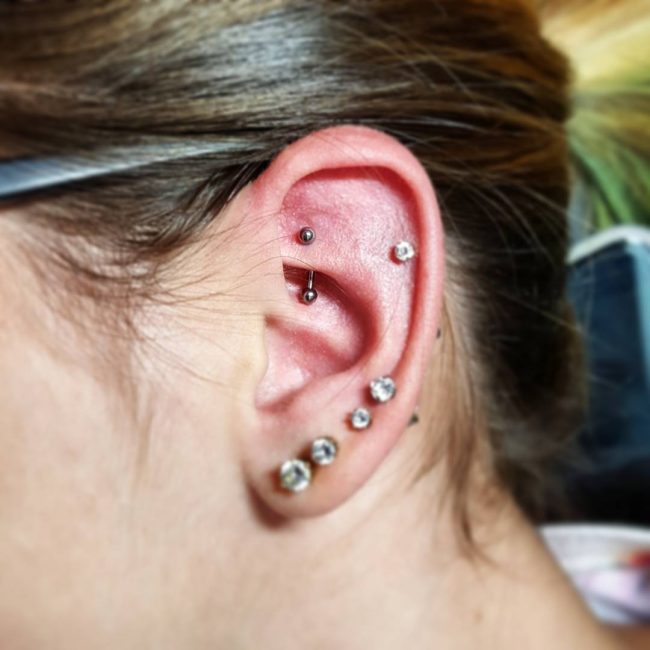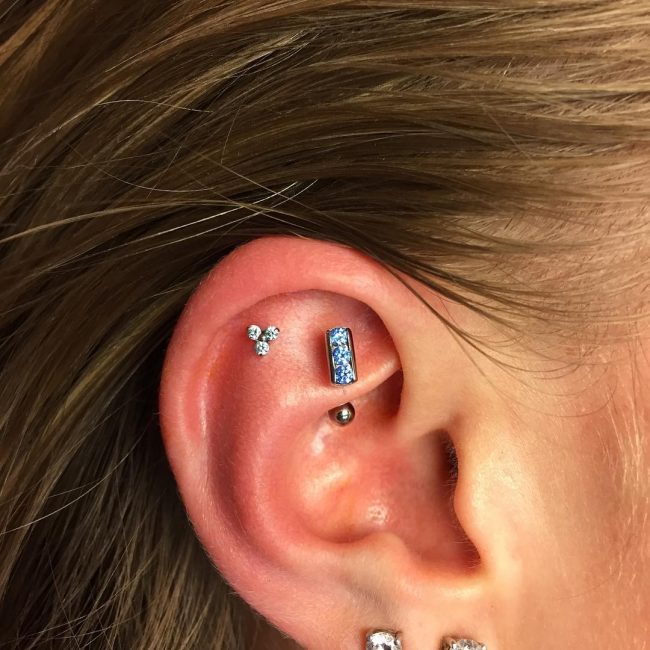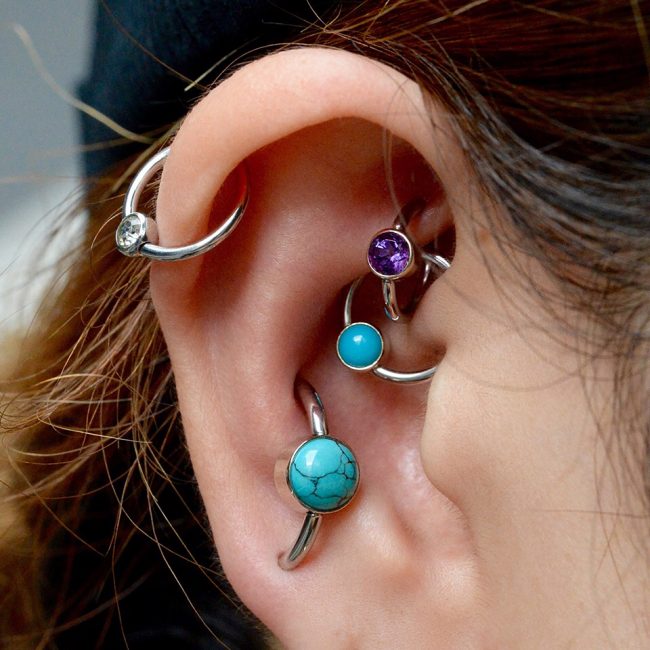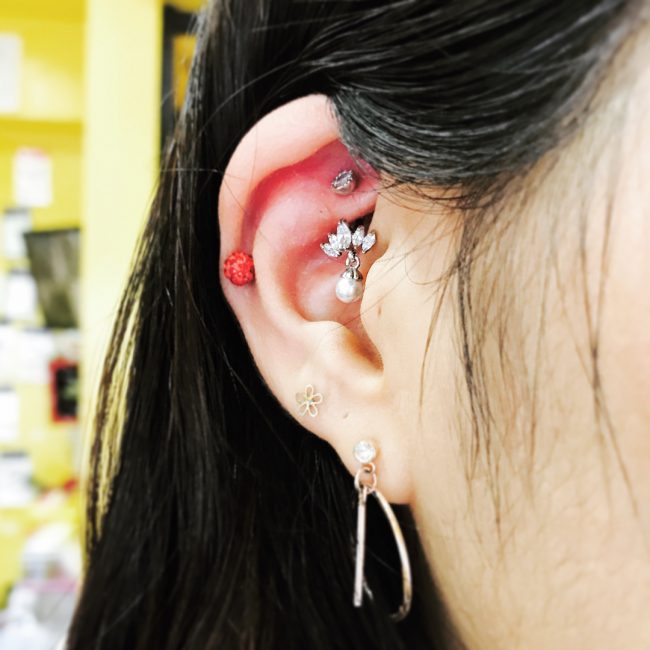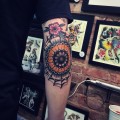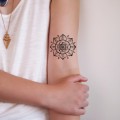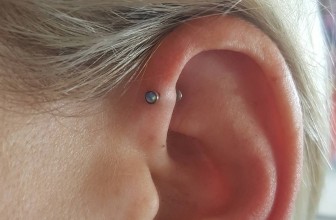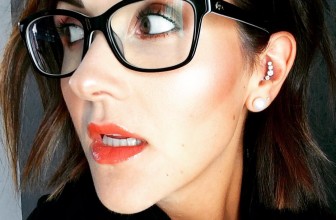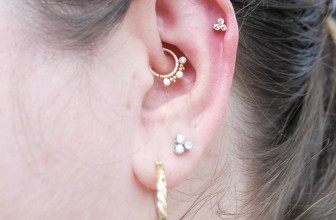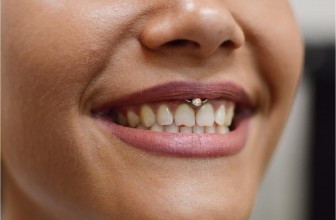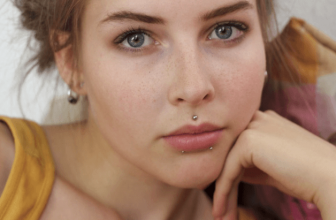50 Amazing Rook Piercing Ideas – Top Ideas for Your Inspiration (2019)
The rook is one part of the ear that often tends to go unnoticed. Perhaps that’s the reason why it stands out as one of the coolest ear piercings you can get. Just to make sure you’re familiar with the rook region of the ear, we’ve got this definition – the inner ridge of the cartilage running down the center parallel to the helix. That said, rook piercing is one that’s made along the upper crux of the cartilage.
Maybe you’ve made up your mind that it’s now time to get this type of ear piercing. But wait a second. Do you have any idea of what it entails and what you might expect during the piercing process? Just as much as you may want to sport one, the whole idea of rook ear piercing might be quite unfamiliar to you.
Now we’re here to take care of that by outlining some basics involved in the process. Be sure to be surprised by what you’re going to find out about this type of ear piercing.
Contents:
Types
Double Rook Pierce: Here, two perforations are made on inner cartilage ridge. It’s the most painful piercing yet the most beautiful.
Faux Rook Pierce: This involves making a single perforation horizontally. It looks great when fitted with colorful studs.
back to menu ↑Procedure
How rook piercing is carried out is one part that may be of great interest to you. The procedure is no different from other piercings made in the cartilage of the ear. You have two methods to choose from: clamping or freehand technique. Among the two, freehand piercing is the most common method used and thus more recommended.
Before starting the procedure, you need to be cautious about the studio and the artist who’s going to make the piercing. Ensure to choose a well-established studio and seek the services of a professional. Though costlier compared to at-home piercing, seeking the services of a professional will ensure safety and eliminate any future complications.
- The area where the piercing is to be made is first cleaned to remove any dirt that might lead to infection. You can choose to use a clean cotton ball dipped in alcohol.
- Decide on the exact spot that you want the piercing to be made. Make sure you agree with the piercer on the placement and make a mark to determine the exact point that the entrance and exit of the hole will be. In most cases, the piercer would be the one to give advice on the best location.
- A hollow, sterilized needle (14g or 16g) is pushed through the entrance and exit. A large gauge piercing needle can also be used provided it’s sterilized. A jewelry is then inserted to complete the piercing.
Jewelry
The type of jewelry used is more like a personal preference. You can choose to use curved or straight jewelry. But beware that some curved jewelry might harbor bacteria leading to infections. That said, you need to keep it sterilized on a regular basis. Before forgetting, you need a jewelry that sits comfortably with you.
That’s where the weight of the jewelry comes in handy. Choose to go lightweight to ensure maximum comfort and keep pain at a minimum.
Each type of ear piercing looks great with a specific type of jewelry. For instance, this type of ear piercing goes well with a curved barbell and captive bead rings.
Curved barbell jewelry has less curvature that results in reduced strain, healthier piercing, and shorter healing time. Compared to most types of ear piercing, rook offers limited space. That said, you need a smaller, cute jewelry that’s comfortable to wear. You can also choose to try out other jewelry that complements your piercing, for instance, hoop earrings.
back to menu ↑Pain
The amount of pain experienced is one thing that most people ask about when getting their body pierced. Well, the same goes for rook ear piercing. What level of pain should you expect during and after the process? According to some people, this type of ear piercing tends to be more painful than snug or helix piercing.
Stating the exact amount of pain is quite difficult since each person has a different tolerance level when it comes to pain. It might be excruciating to one person and just a slight tickle to another. But just to give an example, a person with a low tolerance for pain might experience a pain threshold of 5-6 on a scale of 1-10.
back to menu ↑Aftercare
Just like any other forms of ear piercings, the rook type of ear piercing needs to be cared for. The piercing needs to be treated twice a day using salt soaks. This should be done for the first 1-2 months. Salt soaks play the important role of softening and drying lymph.
This helps prevent swelling and soreness. In making the salt soak ensure to use warm water since the temperature improves blood circulation to the pierced spot for faster healing. Alternatively, you can wash using soap and warm water. Antibacterial soap is preferred to minimize chances of infection.
- During the healing process, there are some things that you should not do. Though not all-inclusive, these are the things you need to avoid:
Over washing the piercing since it might make the area dry out - Using headphones or earphones
- Sleeping on the piercing
- Applying ointments or exposing the piercing to perfumes, hairsprays, and other cosmetics
- Swimming as the water might get the piercing infected
- Wearing loose hair that touches the piercing
- Keeping your cell phone in contact with the piercing. To avoid complications, clean the piercing after using your phone.
- Sleeping on dirty bedding that might cause infections. Ensure to change your sheets and pillows when going to sleep.
Use of alcohol and peroxides to clean and sterilize the piercing
Healing Time
When it comes to rook piercing, healing is a two-time process. It involves primary and full, secondary healing. Primary healing usually completes within a period of 6 months. Secondary healing, on the other hand, takes between 12-18 months. The longer healing time of this ear piercing is attributed to little blood flow.
Therefore you might want to find a way of improving blood circulation. Expect to experience soreness that persists in the first couple of months. Just remember, proper care will play a major role in reducing the healing time.
back to menu ↑Infections and Complications
Just like other types of cartilage piercing, you might experience some set of complications. Such complications and infections result from lack of proper care during the healing process. They tend to be more pronounced on individuals who have a poorly defined ridge.
In case you fall into such a category, then it’s advisable that you don’t undergo this type of ear piercing. If you are not sure, seek an accurate assessment from the piercer to determine whether your ridge is adequate enough to accommodate the piercing. Some complications worth noting in this type of piercing include migration, rejection, and persistent soreness.
Talking about persistent soreness, the pain can last for a whole year causing lots of discomforts. But what causes such complications? Well, the major cause of complications results from improper piercing from an inexperienced piercer. Other causes include careless handling, improper aftercare, improper placement, and poor anatomy.
Jewelry, especially curvature barbell sporting increased curvature can cause complications by putting undue strain on the healing fistula. This is what prolongs soreness and trigger migration. Shallow or oddly angled piercing lead to rejection.
back to menu ↑How Much Does it Cost?
The cost of this type of piercing is subject to variations. What you’re going to pay will largely depend on your locality and the quality of the studio or professional service you choose. Often, expect to pay $50 on average for professional ear piercing. It might be higher but won’t go beyond $70. The cost is also subject to variations based on the type of rook piercing you want.
back to menu ↑FAQs
There are many queries about rook ear piercing. Here, we look at some of the most notable ones.
Q: Is there a risk for hearing damage?
A: Though it might seem like just an ordinary ear piercing, rook pierce can cause complications when not done right. That’s why it’s always recommended that you employ the service of a professional.
Q: How much post-piercing care should I expect?
A: Well, all ear piercing aftercare is pretty standard. Just ensure to keep it clean, keep the jewelry on, and avoid exposure to cosmetics or irritants.
Q: What’s the best jewelry for this piercing?
A: Hoop earrings with post or ball is a great match for this piercing.
Q: What’s the normal size of this piercing?
A: The size will be determined by the size of the needle used. It ranges from 1/4, 5/16, to 3/8 inches.
Conclusion
We hope that this article has provided all you need to know about rook ear piercing. Now it’s time to make up your mind and get one. Though quite painful compared to other ear piercings, albeit that the trouble is definitely worth it. Remember that complications might arise when done improperly. So keep on the safe side and seek the service of a professional no matter the cost.

